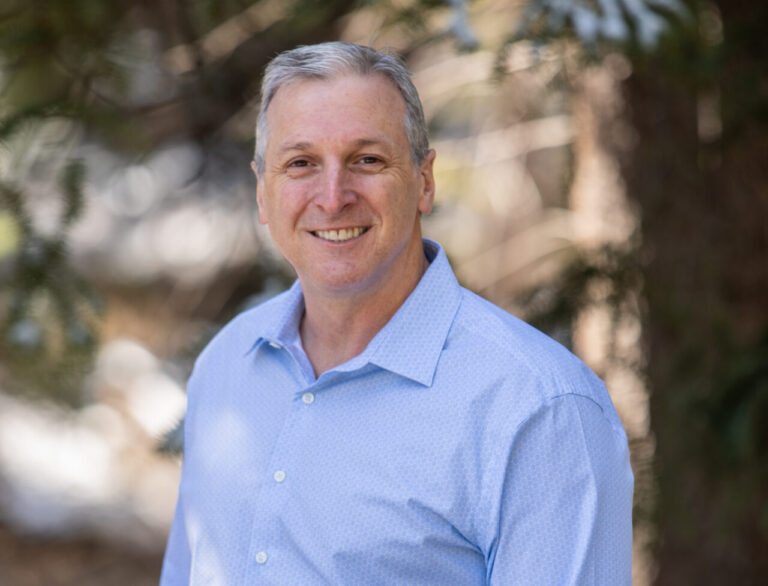How to Feel Happier
This article first appeared in the Vail Health Magazine 2020/21 Issue.

Between sunny social media posts and feelgood fads, you might be getting the idea that if you’re not happy all the time, something’s wrong. But what’s really wrong is the message. Human beings feel. It’s what we do. Life’s peaks and valleys elicit all kinds of emotions, from joy and bliss to anger, fear and devastation.
“It’s impossible to feel great all the time,” says psychologist and Community Behavioral Health Director for Eagle Valley Behavioral Health Dr. Casey Wolfington. “A lot of our community struggles with that happiness ideal.”
Get Help
While perfect happiness is pretty darn hard to achieve in a lifetime, feeling down in the dumps for extended time periods isn’t any fun, nor is it healthy. So, how can we be happier? First of all, acknowledge your feelings, and know when to say when. If difficult emotions like anxiety, anger and hopelessness start to interfere with your daily functioning, it’s time to seek professional help. And, if problems begin creeping into more and more areas of your life, negatively impacting relationships, work and health, you’re probably overdue for a therapeutic tune-up.
Granted, experts like Dr. Wolfington and Chris Lindley, chief population health officer for Vail Health and executive director of Eagle Valley Behavioral Health, would prefer that people seek help before a crisis hits. After all, athletes work with coaches who enable them to mentally prepare, and plenty of professionals in the business world turn to executive coaches. “It’s easier to seek help and form a connection when you’re not under distress,” Dr. Wolfington says. “The more we can do preventatively, the better.”
Nature & Nurture
The good news: There are many ways to find happiness. And you don’t have to pick just one. To begin with, focus on reestablishing strong social bonds. “Human connection is so important,” Dr. Wolfington says. “It’s been the key to survival throughout history. It’s such a huge piece, sometimes we don’t understand its impact.”
Texts, social media and phone calls are fine, but relying solely on distant communication has left our society feeling exactly that: distant. In-person communication includes body cues, verbal tones and warm smiles that no emoji can transcend. Even when we’re six feet apart, it’s amazing how close we can feel. Fortunately, happiness seems to be more contagious than just about any virus; people who feel happy tend to elicit the same feelings in others. But, beware: anger and fear are just as catchy.
“We really don’t know what power we have,” Dr. Wolfington says about how our emotions influence others, and vice versa. Another simple, yet powerful, intervention includes nature and exercise — particularly when combined.
“Nature is calming and helps build your immune system through vitamin D,” Lindley says. “Now more than ever, there are great reasons to get outside, and there’s never been a study that says exercise is not supportive. It’s not only the cheapest, but it’s also the least invasive, therapy because you can do it yourself.”
More Modalities
There are so many ways to feel more empowered, joyful and resilient, we can’t list them all. But here are several that can lead to a more fulfilling life.
Cognitive Behavioral Therapy: CBT helps people identify inaccurate or negative thinking in order to view situations more realistically and respond in more effective ways.
Psychotherapy: At its core, psychotherapy is talk therapy with a trained mental health professional. Psychotherapy has been studied in a variety of clinical and real-life settings, and can be as, or more, successful at treating mental health challenges as medication. Benefits include, but are not limited to, a reduction in stress, a new perspective on problems, tools for managing emotions, help with depression and ways to communicate with others.
Mindfulness & Meditation: What once was reserved for monks is now mainstream. Meditation apps and courses abound, and techniques include guided imagery, breathing and physical relaxation exercises and movement (like yoga) to help manage emotions. “Mindfulness encourages individuals to be present and fully attend to their experiences. This may include focusing on your thoughts and your emotions, but also letting go of the judgment that is associated with the experience,” Dr. Wolfington says.
Light & Sunlight: Research indicates that practicing safe sunlight exposure can enhance serotonin levels, which are linked to mood. Some people’s depression and anxiety are seasonal: Less daylight results in more symptoms. They may benefit from full-spectrum lights, or increased sunlight.
Animal-Assisted Therapy: Animals have a naturally soothing, warm-fuzzy effect. They can even help people manage difficult emotions. “We are seeing research supporting positive outcomes for animal-assisted therapy, from children struggling with reading disabilities to adult veterans struggling with post-traumatic stress disorder,” Dr. Wolfington says.
Grief Work: Grief work comes in various forms, one being The Grief Recovery Method. Grief, and other therapeutic work, can be done individually or within groups. “There is not one person that is not touched by grief during this pandemic,” says Celynn McClarrinon, a local licensed social worker in Avon, naming losses like jobs, routine, travel plans, freedom and not seeing older parents, as well as loss of physical touch. “The Grief Recovery Method creates a safe environment in which to look at old beliefs about dealing with loss, to look at what losses have affected your life and to take new actions, which lead to completion of the pain attached to one of those losses.”
Positive Psychology: This relatively new, scientific approach to thoughts, feelings and behavior focuses on strengths instead of weakness in an effort to build the good, rather than repairing the bad. Time is spent on building optimism, wellbeing, gratitude, self-confidence, hope and more.
Forgiveness & Acceptance: The whole point of feeling your feelings is to move on and live more freely. But when somebody wrongs you, intentionally or not, it can be difficult to let go of the hurt. There are two sides to forgiveness: decisional and emotional. Decisional forgiveness is generally the “easier” of the two, as it involves a conscious choice to replace ill will with good will. Emotional forgiveness is harder because you have to move away from the negative feelings and stop dwelling on them — despite sometimes still experiencing the consequences of the wrongdoing. “People often seek therapy to move forward without all of the anger or emotions that impact their happiness,” Dr. Wolfington says. “Working through forgiveness is really about processing your own emotions.”
Medication: Sometimes, behavioral health issues related to chemical imbalances benefit from medications. Psychiatrists specialize in medications for mental health.
Your Turn
Lindley believes in the 1% Rule: Take one small step, every day, to lift your mood by just 1%, and within a year, you’ll reach 365% improvement. “As individuals, we all know which activities help calm us, so it’s knowing yourself and what things allow you to disconnect and let the mind rest,” Lindley says. “It may be different than the majority of your friends, but that’s OK.”


